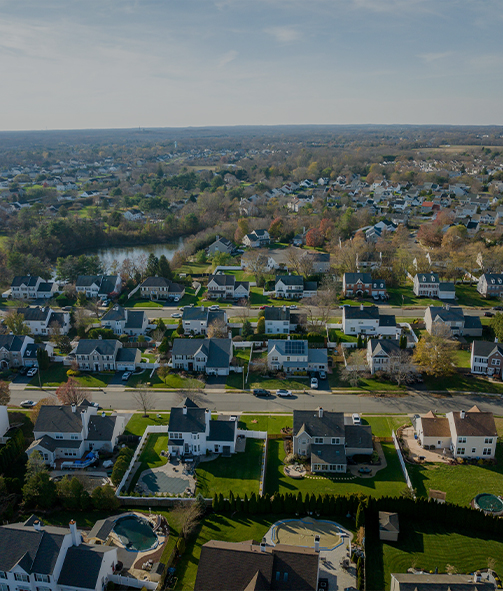Halloween Pedestrian Accident Statistics
Halloween is meant to be a night of costumes, candy, and fun, but it’s also one of the most dangerous nights of the year for pedestrians. Across the country, pedestrian fatalities more than double on Halloween compared to typical evenings. In New Jersey, where neighborhoods in Monmouth County are filled with trick-or-treaters, that risk is even more pronounced.
If you or your child is injured in a pedestrian accident on Halloween, it’s essential to know why these crashes happen, how liability is determined, and what evidence can protect your claim.
What Do Recent Numbers Say About Pedestrian Risk?
National traffic data shows just how serious the problem is:
- The NHTSA reports that 7,314 pedestrians were killed, and more than 68,000 pedestrians were injured nationwide in 2023.
- On Halloween, the risk of pedestrian fatalities is 43% higher compared to other evenings, according to a peer-reviewed study of national crash data.
- The most dangerous time is from 5:00 p.m. to 9:00 p.m., with a notable spike between 6:00 and 7:00 p.m., when trick-or-treating typically peaks.
- From 2019 to 2023, 198 people were killed in alcohol-related crashes on Halloween night, including 30 pedestrians, according to Traffic Safety Marketing.
These numbers make it clear that Halloween brings a unique set of risks, particularly for children and families walking in busy neighborhoods.
Why Is Halloween More Dangerous for Pedestrians?
Several factors combine to make Halloween one of the riskiest nights for pedestrians in Monmouth County and across New Jersey:
- Poor light conditions – Trick-or-treating often starts at dusk and continues into the night, when visibility drops.
- Costumes–Dark clothing or masks can make children hard to see, while bulky costumes may affect movement.
- Increased foot traffic–Dozens of children may cross the street at once, sometimes mid-block or between parked cars.
- Driver behavior–Speeding, distracted driving, and alcohol use all increase on Halloween night.
- Residential settings – Many crashes occur on smaller neighborhood streets that lack adequate lighting or clear markings.
What Does This Mean for Monmouth County Families?
AAA Northeast has warned that Halloween is among the deadliest nights of the year for child pedestrians, and New Jersey has consistently ranked high in pedestrian fatalities. In towns across Monmouth County — from Freehold and Asbury Park to Middletown and Neptune — families flood the streets during Halloween.
Local conditions, such as crowded sidewalks, limited street lighting, and heavy neighborhood traffic, make vigilance critical. Both drivers and property owners play a role in reducing risks, but when negligence occurs, accident victims have legal options.
Who Can Be Held Liable After a Halloween Pedestrian Accident?
Liability depends on the circumstances of the crash, but several scenarios are common:
- Negligent drivers–A driver who speeds, drives impaired, or fails to yield at a crosswalk may be held responsible.
- Comparative negligence–In New Jersey, fault can be shared. For example, if a pedestrian darted into the street, their recovery may be reduced — but not eliminated — unless they are more than 50% at fault.
- Property owners–Poor lighting, blocked sight lines, or unsafe walkways may expose property owners to liability if those hazards contributed to the accident.
Ultimately, a thorough investigation is needed to determine who is legally responsible.
What Evidence Should Be Preserved After a Halloween Crash?
Because conditions change rapidly, collecting evidence promptly is crucial. Useful evidence includes:
- Photos and videos of the accident scene, including lighting and visibility
- Witness statements from neighbors or other trick-or-treaters
- Police and accident reports
- Surveillance or doorbell camera footage
- Weather and sunset data to establish visibility
- Medical records linking injuries to the crash
Preserving this evidence helps demonstrate how the accident happened and who was at fault.
Safety Tips to Reduce Halloween Pedestrian Risks
Prevention remains the best protection. A few practical tips:
- For families: Use reflective gear, carry flashlights, supervise children closely, and cross only at intersections.
- For drivers: Slow down in residential neighborhoods, stay alert for sudden crossings, and never drive impaired.
- For property owners: Maintain clear sight lines, keep outdoor areas well-lit, and remove hazards from sidewalks and driveways.
Taking these precautions can save lives — and reduce the chance of devastating accidents.
Protecting Your Rights After a Halloween Crash
Halloween should be safe for every child in Monmouth County, yet year after year, it ranks as one of the deadliest nights for pedestrians. If you or a loved one is injured in a pedestrian accident, don’t wait to seek help. Liability often involves complex questions of driver negligence, property conditions, and shared fault.
At Noonan & McMahon, we are committed to protecting injured pedestrians and their families. Contact us today for a free consultation and let us fight for the compensation you deserve.
